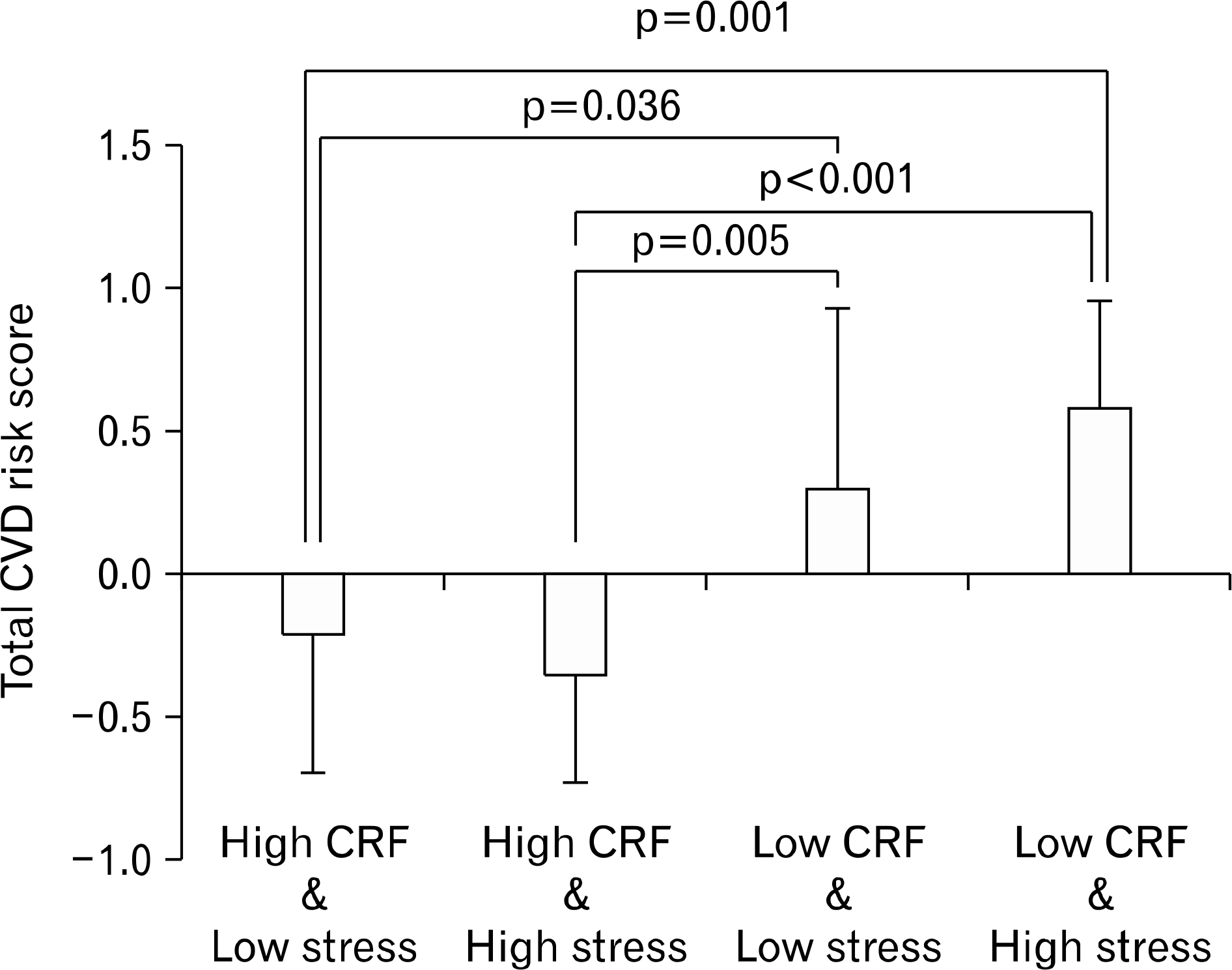1. OECD. Society at a glance 2009: OECD social indicators. Paris: OECD;2009.
2. Karasek RA Jr. Job demands, job decision latitude, and mental strain: implications for job redesign. Adm Sci Q. 1979; 24:285–308.

3. Friedman R, Schwartz JE, Schnall PL, et al. Psychological variables in hypertension: relationship to casual or ambulatory blood pressure in men. Psychosom Med. 2001; 63:19–31.

4. Kuper H, Adami HO, Theorell T, Weiderpass E. Psychosocial determinants of coronary heart disease in middle-aged women: a prospective study in Sweden. Am J Epidemiol. 2006; 164:349–57.

5. Jain D, Burg M, Soufer R, Zaret BL. Prognostic implications of mental stress-induced silent left ventricular dysfunction in patients with stable angina pectoris. Am J Cardiol. 1995; 76:31–5.
6. Kivimaki M, Head J, Ferrie JE, et al. Why is evidence on job strain and coronary heart disease mixed? An illustration of measurement challenges in the Whitehall II study. Psychosom Med. 2006; 68:398–401.
7. Lallukka T, Martikainen P, Reunanen A, Roos E, Sarlio-La-hteenkorva S, Lahelma E. Associations between working conditions and angina pectoris symptoms among employed women. Psychosom Med. 2006; 68:348–54.

8. Johnson JV, Stewart W, Hall EM, Fredlund P, Theorell T. Long-term psychosocial work environment and cardiovascular mortality among Swedish men. Am J Public Health. 1996; 86:324–31.

9. Hamer M. Psychosocial stress and cardiovascular disease risk: the role of physical activity. Psychosom Med. 2012; 74:896–903.
10. Garber CE, Blissmer B, Deschenes MR, et al. Quantity and quality of exercise for developing and maintaining cardiorespiratory, musculoskeletal, and neuromotor fitness in apparently healthy adults: guidance for prescribing exercise. Med Sci Sports Exerc. 2011; 43:1334–59.
11. Chon SH, Kim JY, Cho JJ, Ryoo JG. Job characteristics and occupational stress on health behavior in Korean workers. Korean J Fam Med. 2010; 31:444–52.

12. Kim EH, Lee HY. Job stress and psychosocial health according to the level of exercise behavior of working women. J Kinesiology. 2013; 15:49–59.
13. DeFina LF, Haskell WL, Willis BL, et al. Physical activity versus cardiorespiratory fitness: two (partly) distinct components of cardiovascular health? Prog Cardiovasc Dis. 2015; 57:324–9.

14. Ministry of Employment and Labor. Survey for work type of employment. Seoul: Ministry of Employment and Labor;2007.
15. Chang SJ, Koh SB, Kang D, et al. Developing an occupational stress scale for Korean employees. Korean J Occup Environ Med. 2005; 17:297–317.
16. Park S, Park S, Lee M, Ahn H. Validation of prediction equations for VO2max using bruce protocol. Korean J Meas Eval Physic Educ Sport Sci. 2014; 16:41–50.
17. Friedewald WT, Levy RI, Fredrickson DS. Estimation of the concentration of low-density lipoprotein cholesterol in plasma, without use of the preparative ultracentrifuge. Clin Chem. 1972; 18:499–502.

18. Gerber M, Borjesson M, Ljung T, Lindwall M, Jonsdottir IH. Fitness moderates the relationship between stress and cardiovascular risk factors. Med Sci Sports Exerc. 2016; 48:2075–81.

19. Celermajer DS, Sorensen KE, Bull C, Robinson J, Deanfield JE. Endothelium-dependent dilation in the systemic arteries of asymptomatic subjects relates to coronary risk factors and their interaction. J Am Coll Cardiol. 1994; 24:1468–74.

20. Rozanski A, Blumenthal JA, Kaplan J. Impact of psychological factors on the pathogenesis of cardiovascular disease and implications for therapy. Circulation. 1999; 99:2192–217.

21. Rosengren A, Hawken S, Ounpuu S, et al. Association of psychosocial risk factors with risk of acute myocardial infarction in 11119 cases and 13648 controls from 52 countries (the INTERHEART study): case-control study. Lancet. 2004; 364:953–62.

22. Braun S, Hollander RB. Work and depression among women in the Federal Republic of Germany. Women Health. 1988; 14:3–26.

23. Ishizaki M, Tsuritani I, Noborisaka Y, Yamada Y, Tabata M, Nakagawa H. Relationship between job stress and plasma fibrinolytic activity in male Japanese workers. Int Arch Occup Environ Health. 1996; 68:315–20.

24. Muldoon MF, Herbert TB, Patterson SM, Kameneva M, Raible R, Manuck SB. Effects of acute psychological stress on serum lipid levels, hemoconcentration, and blood viscosity. Arch Intern Med. 1995; 155:615–20.

25. Holtermann A, Mortensen OS, Burr H, Sogaard K, Gyntelberg F, Suadicani P. Physical work demands, hypertension status, and risk of ischemic heart disease and all-cause mortality in the Copenhagen Male Study. Scand J Work Environ Health. 2010; 36:466–72.

26. Hamer M, Molloy GJ, Stamatakis E. Psychological distress as a risk factor for cardiovascular events: pathophysiological and behavioral mechanisms. J Am Coll Cardiol. 2008; 52:2156–62.
27. Biddle SJ, Fox KR, Boutcher SH. Physical activity and psychological wellbeing. London: Routledge;2000.
28. Silverman MN, Deuster PA. Biological mechanisms underlying the role of physical fitness in health and resilience. Interface Focus. 2014; 4:20140040.

29. Jackson EM, Dishman RK. Cardiorespiratory fitness and laboratory stress: a meta-regression analysis. Psychophysiology. 2006; 43:57–72.

30. Rimmele U, Zellweger BC, Marti B, et al. Trained men show lower cortisol, heart rate and psychological responses to psychosocial stress compared with untrained men. Psychoneuroendocrinology. 2007; 32:627–35.






 PDF
PDF ePub
ePub Citation
Citation Print
Print


 XML Download
XML Download